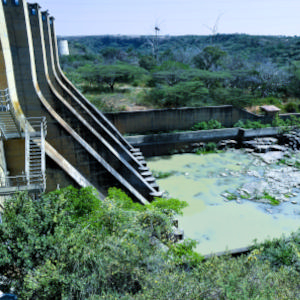Impacts of the Koka hydropower dam on macroinvertebrate assemblages in the Awash River Basin in Ethiopia

Submitted: 3 September 2023
Accepted: 13 November 2023
Published: 13 December 2023
Accepted: 13 November 2023
Abstract Views: 1384
PDF: 220
Supplementary: 42
HTML: 11
Supplementary: 42
HTML: 11
Publisher's note
All claims expressed in this article are solely those of the authors and do not necessarily represent those of their affiliated organizations, or those of the publisher, the editors and the reviewers. Any product that may be evaluated in this article or claim that may be made by its manufacturer is not guaranteed or endorsed by the publisher.
All claims expressed in this article are solely those of the authors and do not necessarily represent those of their affiliated organizations, or those of the publisher, the editors and the reviewers. Any product that may be evaluated in this article or claim that may be made by its manufacturer is not guaranteed or endorsed by the publisher.
Similar Articles
- María del Carmen Hernández, Javier Alcocer, Luis A. Oseguera, Elva Escobar, Profundal benthic invertebrates in an oligotrophic tropical lake: different strategies for coping with anoxia , Journal of Limnology: Vol. 73 No. 2 (2014)
- Elisa A.C.C. Alvim, Adriana O. Medeiros, Renan S. Rezende, José F. Gonçalves Júnior, Leaf breakdown in a natural open tropical stream , Journal of Limnology: Vol. 74 No. 2 (2015)
- Anna Rychła, Edyta Buczyńska, Anna Maria Szczucińska, The environmental requirements of Crunoecia irrorata (Curtis, 1834) (Trichoptera: Lepidostomatidae) and the potential of the species for use as an indicator: an example from the Vistulian glaciation area , Journal of Limnology: Vol. 74 No. 3 (2015)
- Stefano Fenoglio, Tiziano Bo, Massimo Cammarata, Manuel J. López-Rodríguez, José M. Tierno de Figueroa, Seasonal variation of allochthonous and autochthonous energy inputs in an alpine stream , Journal of Limnology: Vol. 74 No. 2 (2015)
- Tiina Nõges, Orlane Anneville, Jean Guillard, Juta Haberman, Ain Järvalt, Marina Manca, Giuseppe Morabito, Michela Rogora, Stephen J. Thackeray, Pietro Volta, Ian J. Winfield, Peeter Nõges, Fisheries impacts on lake ecosystem structure in the context of a changing climate and trophic state , Journal of Limnology: Vol. 77 No. 1 (2018)
- Olga Tammeorg, Tõnu Möls, Külli Kangur, Weather conditions influencing phosphorus concentration in the growing period in the large shallow Lake Peipsi (Estonia/Russia) , Journal of Limnology: Vol. 73 No. 1 (2014)
- Paraskeva Michailova, Julia Ilkova, Ewa Szarek-Gwiazda, Andrzej Kownacki, Dariusz Ciszewski, Genome instability in Chironomus annularius sensu Strenzke (Diptera, Chironomidae): A biomarker for assessment of the heavy metal contaminants in Poland , Journal of Limnology: Vol. 77 No. s1 (2018): Recent advances in the study of Chironomidae: An overview
- Mircea Alexe, Gheorghe Șerban, Andreea Baricz, Adrian-Ștefan Andrei, Adorján Cristea, Karina P. Battes, Mirela Cîmpean, Laura Momeu, Vasile Muntean, Sebastian A. Porav, Horia L. Banciu, Limnology and plankton diversity of salt lakes from Transylvanian Basin (Romania): A review , Journal of Limnology: Vol. 77 No. 1 (2018)
- Sergio Cohuo, Maria del Carmen Hernández, Liseth Pérez, Javier Alcocer, Candona alchichica (Podocopida: Candonidae), a new ostracod species from saline, tropical Lake Alchichica, Mexico , Journal of Limnology: Vol. 76 No. 1 (2017)
- Jong-Yun Choi, Kwang-Seuk Jeong, Geung-Hwan La, Kwang-Hyeon Chang, Gea-Jae Joo, The influence of aquatic macrophytes on distribution and feeding habit of two Asplanchna species (A. priodonta and A. herrickii) in shallow wetlands, South Korea , Journal of Limnology: Vol. 74 No. 1 (2015)
<< < 9 10 11 12 13 14 15 16 17 18 > >>
You may also start an advanced similarity search for this article.

 https://doi.org/10.4081/jlimnol.2023.2153
https://doi.org/10.4081/jlimnol.2023.2153





